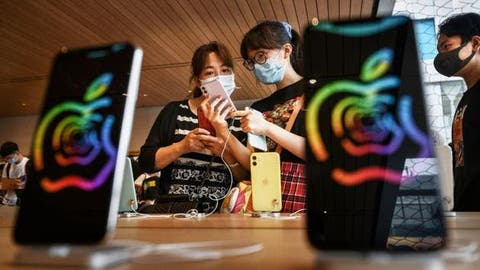According to the latest research data, Apple has become the fastest growing smartphone manufacturer in the Chinese market in the second quarter. It has effectively resisted the pressure of the global economic downturn in the second quarter. Shortly, the iPhone sales are quite impressive.
Apple’s lower-priced iPhone SE and the popular iPhone 11, coupled with higher discounts to consumers, have helped the company boost its performance in this important market, China.
Apple’s iPhone Sales In China Are Impressive
As Counterpoint Research says, Apple’s channel sales in China from April to June were 7.4 million units, a year-on-year increase of 32%. Channel sales refer to the number of iPhones sold to Apple’s retail partners, which are closer to the actual sales to consumers.
In comparison, Huawei’s channel sales in the quarter were 36.6 million units, a year-on-year increase of 14%. But Apple’s total sales in China are much lower than that of Huawei.
OPPO, VIVO and Xiaomi also rank among the top five in the Chinese market. But the sales of these three companies have fallen sharply. And the entire Chinese market has shrunk by 17% in the quarter.
All Channels Work Well
In addition, data from Shanghai CINNO Research showed that iPhone sales in the Chinese market reached 13 million units in the second quarter, an increase of 62% year-on-year. The agency counts retail sales, not channel sales. On a quarter-to-quarter basis, iPhone sales in the current quarter increased by 225% compared to the first quarter. Although benefiting from a lower base, it also highlights the company’s strong recovery in the Chinese market.
Apple sold less than 500,000 iPhones in China in February this year. But it has since recovered steadily thanks to the iPhone 11.
‘The iPhone 11 is still China’s best-selling model, and it has been the case since September last year. This shows that Apple has a strong brand appeal in the eyes of Chinese consumers,’ Counterpoint Research analyst Flora Tang says.
Apple will release its financial results from April to June this Thursday.
Apple also discounted the iPhone significantly in June, which boosted iPhone sales. In the second quarter, the low-priced second-generation iPhone SE ranked among the three best-selling smartphones in China.
Apple has also shown full resilience in the service sector. According to Sensor Tower, the App Store’s gross revenue in the second quarter was $4.4 billion, a 4% decrease from the $4.6 billion in the first quarter. But it still achieved a year-on-year growth of 13%.
‘China’s App Store spending usually increases in the first and second quarters of each year. But this year’s month-on-month decline is mainly due to the normalization of the ecosystem after the peak of the new coronavirus epidemic,’ Stephanie Chan said.
iPhone 12 gets attention
China launched 5G networks in December last year. So local smartphone manufacturers have launched many 5G devices. According to data from Counterpoint Research, 1/3 of the smartphones sold in the Chinese market currently support 5G technology, ranking first in the world.
But Apple has not launched a 5G iPhone yet. However, many analysts believe that the new device that may be named iPhone 12 should support 5G.
‘If Apple develops attractive pricing policies, we expect the 5G iPhone will be immediately sought after in China. Chinese consumers have fully understood the benefits of 5G, and operators are also promoting competitively priced 5G packages.’ Counterpoint Research analyst Fu Lola Tang said.
Investment bank Wedbush Securities analyst Daniel Ives said in a report released on Monday that ‘Apple’s demand in China continued to pick up in June and the first half of July, despite some fluctuations in speed. And this fall, iPhone 12 will usher in a huge release cycle of depressed demand in this key market and globally.’
He predicts that China will have 60 million to 70 million iPhones ‘in a window of opportunity for upgrades in the coming year. And Apple will actively promote it at various price points (including iPhone SE and iPhone 12), thus facing the pressure of local competitors to consolidate the existing position under the circumstances.’
